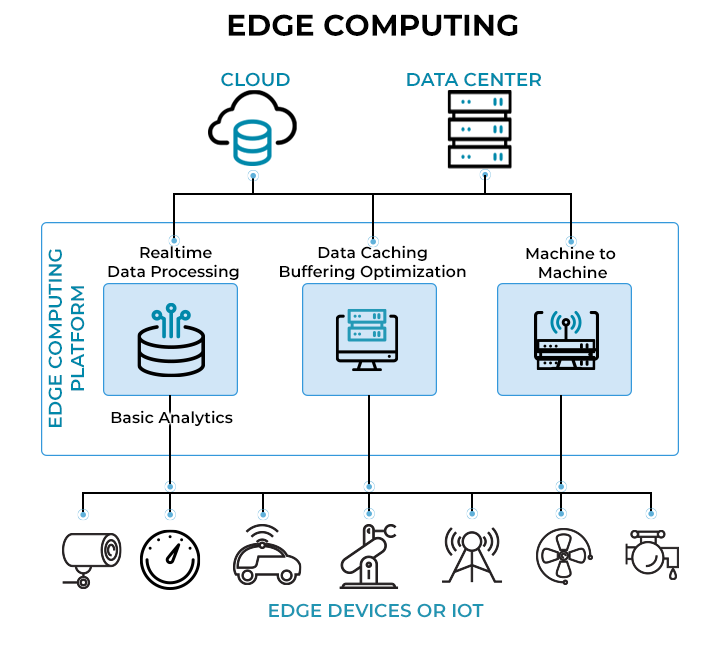Edge computing is a way to improve the customer experience by eliminating the middleman and reducing latency for end users. This process involves the use of nodes at the edge of a network, which process data and run applications. They can be simple or complex, and can process data in real time.
Edge computing eliminates the middleman
Edge computing is a distributed computing paradigm that moves computes and storage closer to the end user. This approach eliminates lag time and bandwidth in real time data processing. Edge computing can be used anywhere from a retail store to a smart city. It’s also a good fit for industrial applications, where the resources are closer to the point of use.
Edge computing can also help reduce the performance of smart devices. It uses decentralized data centers called edge nodes to handle work that would normally be handled by the cloud. Edge nodes can be owned by an enterprise or a managed service provider. While it is still a relatively new technology, edge computing reduces latency for end users by eliminating the middleman.
In addition to improving response time for end users, edge computing can lower network latency for a variety of applications, including medical devices and smart healthcare frameworks. It allows remote 3D CT imaging to be processed with less latency. This approach also reduces transmission costs.
The advent of big data has presented many challenges for businesses. One major challenge is latency. In order to be responsive and take action, companies need to process and store data closer to their users. Edge computing allows companies to keep their data closer to the user, reducing latency and making data more accessible. Edge computing can also help businesses decide what information needs to be accessed immediately, and how much can be stored locally for future use.
Edge computing has gained attention with the rise of IoT. Although IoT technologies are still in their infancy, their development will greatly influence the future of edge computing. One type of edge computing technology that’s becoming increasingly popular is a micro modular data center. These data centers can be deployed close to the data and provide a more cost-effective alternative to optimizing asset performance.
Edge computing is a fast, secure, and scalable solution to bandwidth and latency. In addition to reducing network latency, it also minimizes the amount of bandwidth and server resources required to handle such data. Moreover, edge computing solutions help companies solve bandwidth and traffic flow management problems. SaaS providers can also benefit from edge computing as it reduces data backhaul and increases service performance.
As more devices are connected to the internet, edge computing will be more important than ever. 5G networks will allow faster and more efficient connectivity for smart devices. Edge computing solutions will help businesses deliver 5G services more quickly, while reducing the latency for end users. These new technologies will enable the development of new IoT applications. For example, connected cars and smart cities will benefit from edge computing.
While edge computing is closely associated with cloud computing, it is not the same. Edge computing involves the physical deployment of compute and storage resources.
It improves the customer experience
Edge computing enables near real-time digital experiences by reducing latency for end users. When devices communicate with distant servers, there is a delay, so it’s important to move some processes closer to the user’s device. This way, the website or mobile app can process requests faster and reduce traffic to the origin server.
Edge computing uses a distributed IT architecture that places workloads closer to the point of digital interaction, which can be a big benefit for organizations. As data volumes rise and connectivity increases, organizations are looking for ways to make their customer experiences better. By placing workloads closer to the source, organizations can take advantage of growing data volumes without sacrificing quality. Many edge computing solutions focus on one layer of the IT stack, but the real value comes from how data adapts to the changing needs of end users.
With edge computing, end users can customize their experiences, and organizations can provide more edge capabilities to provide a richer experience. Edge computing also allows organizations to reduce centralized data center footprints, which is particularly beneficial for businesses with large volumes of data. By allowing end users to personalize their experiences, organizations can enhance customer experiences and improve the customer experience.
Edge computing can enable real-time marketing, and automated systems can react to customer inputs. Because these systems are not entirely dependent on connecting IoT devices to centralized servers, edge computing can enable more complex and interactive experiences that can take place offline. The ability to use edge computing for offline experiences is a powerful way to improve the customer experience and reduce latency for the end users.
Edge computing is rapidly becoming a mainstream technology. We use it everywhere, from connected devices to mobile apps, and it is becoming increasingly important. Our everyday interactions demand instant response. The right data at the right time can mean the difference between a positive and a terrible experience.
Edge computing also improves the performance of end-user devices. It eliminates the need to create expensive infrastructure and reduces latency for end users. In addition, edge computing allows more devices to connect simultaneously, reducing the cost of connecting to the cloud.
Edge computing reduces latency by placing computing resources close to the data source. For example, smart speakers, smartphones, and railway stations can place small compute and storage at the point where data is generated. The results can then be sent back to the data center for human review, archiving, and broader analytics
Build with IoT Worlds your Edge Computing Solutions. Contact us!
Edge computing is also useful for self-driving cars. Self-driving cars will require information that can be processed instantly. Autonomous cars will rely on intelligent traffic controls and will need fast data networks to operate effectively.


